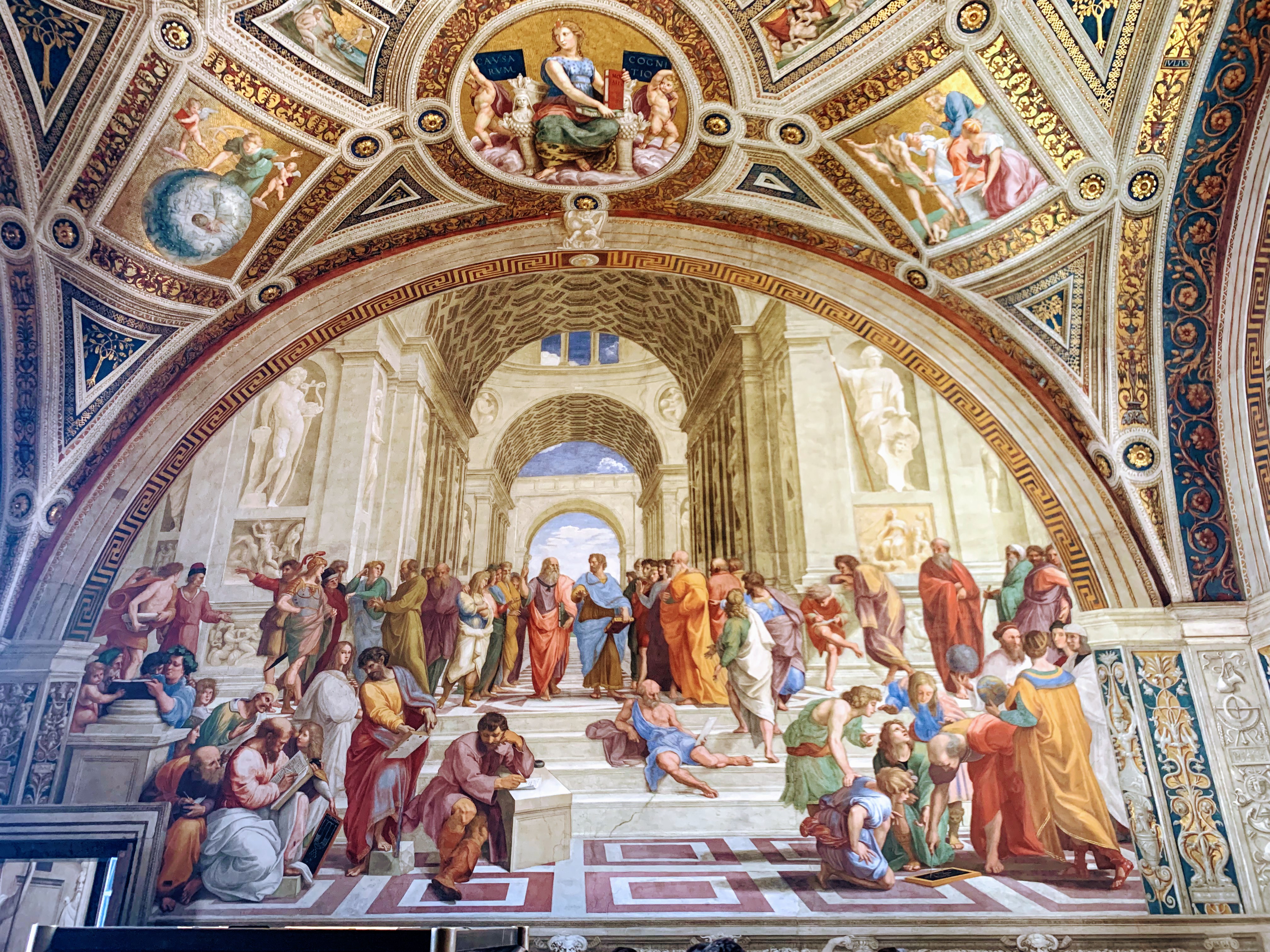In an article I published today in Catholic World Report, “The profitable Vatican Museums remain closed, look toward a June opening,” I posed some tough questions to Rev. Kevin Likey, a priest of the Legionaries of Christ from Flint, Michigan, who is currently serving as the director of the Vatican Museums Patrons’ Office.
The Patrons’ Office is responsible for procuring a major portion of philanthropy necessary for maintaining and restoring some of the world’s finest art located inside the Vatican Museums’ “nine miles of corridors and 1,400 rooms.”
The labyrinthine complex includes the world-famous Sistine Chapel with its Michelangelo-frescoed ceilings and Last Judgment painting, the Raphael Rooms, the original Papal Apartments, the Gregorian Egyptian Collection, Flemish Tapestry and Maps Corridors, Panicoteca Gallery, and some of the finest Roman imperial and classical sculpture dating back at least two and a half millennia.
Being closed for three months during the strictly enforced COVID-19 lockdown has put the Holy See under some serious financial stress. To explain the context, I write:
Every so often economics really is the “dismal science,” as Scottish philosopher Thomas Carlyle put it. Such has been the increasing state of misery as many businesses remain blocked by government public health orders all over the world. Some national coronavirus lockdowns won’t see any untightening until at least early June. The Vatican is no exception to these hard economic times. Its greatest single source of revenue is the Vatican Museums and its attached Sistine Chapel. According to the Museums’ website, entrance remains closed until further notice.
This week in Rome was filled with immense joy as churches reopened to the faithful for daily worship services, including the long-awaited St. Peter’s Basilica. Museums were also given the green light by public health authorities, but the Vatican Museums announced to the world they would postpone opening their bronze doors. There was no official reason given.
The Museums’ continued closure was unexpected, as the Italian website Il Fatto Quotidiano recently but mistakenly announced their immediate, cautious reopening along with other important museums and churches for worship as part of the Italy’s Phase Two roll out that began on Monday, May 18. Reopenings must follow strict sanitation guidelines, including the use of masks, providing hand sanitizing dispensers at entrances, enforcing social distancing, and limiting capacity quotas per hour.
The problem is not that the Vatican Museums are not able to be appreciated by art lovers and pilgrims alike. The underlying issue is that they are a cash cow for the Holy See’s coffers. The Vatican has now lost an estimated $30 million in revenue, based on an average $120 million annually from ticket sales alone. This robust income permits the stable financing of the Roman Curial primary payroll and many other costly institutions.
While the normally packed Museums are still locked, the Vatican’s economy is becoming ever more precarious … For example, the Holy See’s overall budget counts on the Museums for footing the costs of the 3,000-plus people on the Curial payroll; its Propaganda Fide Missions and attached seminary; its multilingual secretariat, the Gendarme police force, governorate, and nunciatures. Of course, the Vatican Museums’ revenues finance the upkeep of its priceless artistic treasures, Rome’s four archbasilicas, the papal gardens, as well as the summer residence of Castel Gandolfo, which was recently incorporated into daily tour packages.
Lixey told me he was not able to comment whether any “new tours or activities [would be] offered to generate additional revenue once the Vatican Museums and Sistine Chapel finally reopen to the public.” He did tell me, however, that “desperate measures would not be taken to sell off assets or priceless art to stay afloat financially.”
First of all, how do you sell the Sistine Chapel? Frescoes don’t easily come off a wall! … Once I heard that when Pope Francis was asked why the Vatican doesn’t sell [some] of its art collection and give the money to the poor, and his response was: “Even the poor have a need for beauty!”
Lixey quite rightly questioned the sense of hawking “a Michelangelo sculpture or Caravaggio painting that would end up being locked away from the eyes of the world” and, according to him, “badly preserved in someone’s private home!” He said:
I am confident that if [our patrons] knew we were in a serious financial crisis, to the point of needing to sell off the collection, they and other world philanthropists would come forward to help us continue to make one of the greatest collections of the world accessible to the world.
I end the article with a sense of hope and trust in God’s plan for the economic health of his ecclesial institutions on earth. Rome is after all the “Eternal City.” The Vatican Museums will not collapse so easily, much less the Sistine Chapel:
This economic crisis is bad, but it will never outlast the city itself. The Urbs Aeterna has seen plagues, foreign rulers, and all sorts of invaders, including this coronavirus, come and go. Rome has always stood the test of time. She has always entrusted the longevity and economic well-being of her divinely protected institutions to hope and providence, a spiritual lesson for all those suffering financial hardship in the here and now.
You can read the original article here.
(Photo credit: Michael Severance.)
